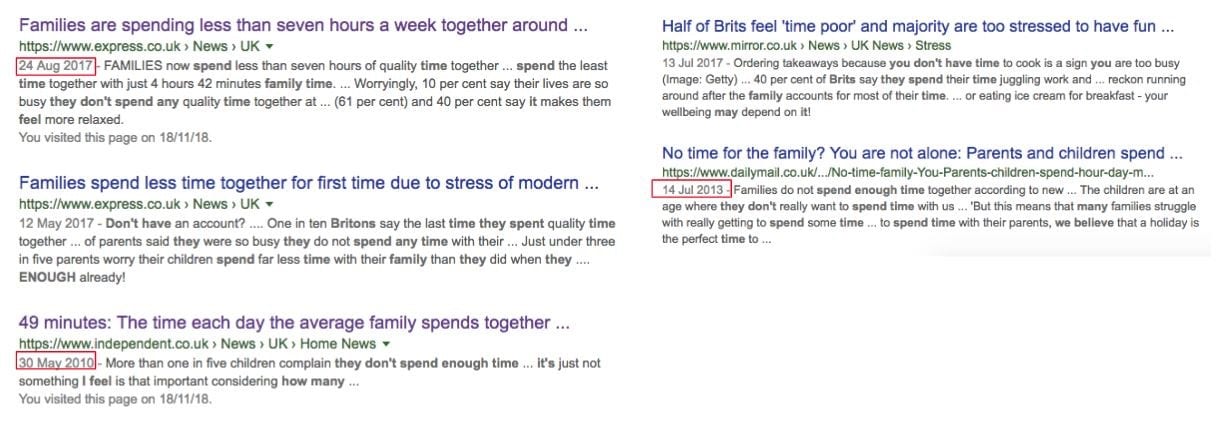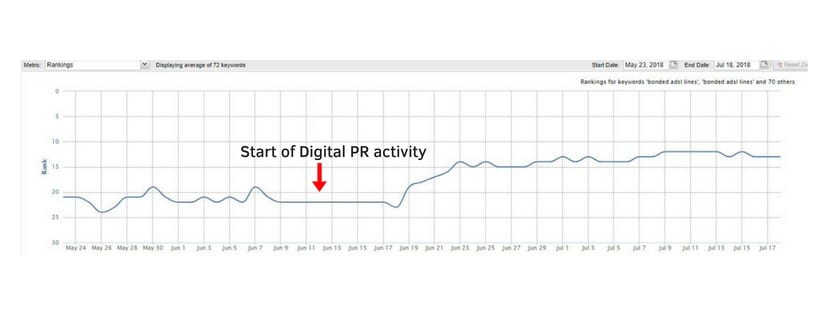Digital PR techniques that will increase your organic rankings and ROI
The rise of PR-fuelled marketing in the face of diminishing returns on advertising has seen 66% of marketers rank quality content as their top marketing priority.
With so much riding on the reputation of a brand, the value of content marketing, earned media, link building and brand reputation management will only continue growing in the race to drive profitable customer action.
Yet there seems to be pressure for PR professionals to not only place stories that boost brand awareness on the most relevant websites but also attain search KPIs such as links, traffic and domain rankings too.
The simple fact is – content campaigns with hundreds of links are completely irrelevant unless the exact ROI of those campaigns are clearly measured.
A question that needs to be addressed more is “have the links we’ve built to x client’s website improved organic rankings? If yes, how can we prove this?”
To incorporate the most effective terms and phrases that will boost your PR content visibility in search engines, here are four areas of focus that will bring the best results.
Content gap analysis
By encouraging collaboration between SEOs and PRs, we can start focusing on ROI-centric, data-driven PR strategies for our clients – and this is where the traditional use of a content gap analysis can provide valuable insight for PRs.
A content gap analysis is typically performed to identify where the opportunities for content creation are, based on mapping keywords that your SEO strategy aims to target.
These types of audits are performed to increase the performance of your content, and therefore online visibility, traffic and ROI – and these are exactly the same KPI’s journalists have to hit.

For example, a journalist’s responsibilities at LAD Bible include “producing trending news articles to tight deadlines”, similar to that of an editor at the BBC – “to use data analytics to ensure the website showcases its array and depth of content to attract a new, diverse audience”.
By performing a top-level content gap analysis on the top-tier websites that your PR teams aim to gain coverage within, you’d not only help build stronger media relationships and trust but ultimately increase the likelihood of attaining high-quality links and coverage.
Here’s a step by step walkthrough of how this would work:
- Work with your PR team to identify the publications you wish to gain links and coverage in.
- Perform a content gap analysis of the highest quality sites.
- Ensure that the identified content opportunities are aligned with your PR strategy.
- Pitch in your content ideas to journalists, outlining the potential traffic and ranking capabilities.
Update old SERP content
We all know that Google loves to see content that is current.
Naturally, content with a recent publishing date will tend to rank higher in the SERPs, compared to outdated articles with old findings.
If the sites dominating the SERPs for your client’s keywords are publications with outdated articles, this could present a great opportunity for collaboration with your PR team.
For example, I pitched in a PR campaign idea to a client that focused on the topic “spending time with family”, and after performing a SERP analysis on the existing content covering this topic, most of the articles found were from top-tier publications including The Independent, Express, Mirror and Daily Mail – and all relatively outdated.

Performing this SERP analysis aided the feasibility of the campaign idea for media pick-up (hence easy client sign off), as it would involve outreaching to top-tier editors that have covered a similar topic with outdated information.
Pitching to journalists with the opportunity for these articles to rank higher in the SERPs by including your client’s fresh new findings allows your email pitch to stand out, building those all important media relationships and trust.
Unique publication and journalist analysis
The pressure for PRs to constantly build new relationships with the media is crucial in the race to attain links from lots of relevant publications and high-quality referring domains.
This is why performing an analysis of the most relevant journalists and authors within your client’s niche from the onboarding process is essential and can reap great PR benefits in the long term.
Here is a list of questions you may want to consider when finding the most relevant journalists in your client’s industry:
- What type of content format does the journalist usually publish?
- What kind of topics does the journalist tend to cover?
- What is the average social engagement these articles receive?
- What style of writing are their media headlines?
Creating strategies backed with the above analysis provides PRs with confidence in knowing what content is and isn’t going to get your client links and coverage.
Not only will you uncover a detailed understanding of your target journalists, but you’ll be able to build highly relevant and reliable media lists for your campaigns.
Competitor link intersect
The value of a competitor link analysis for PRs is greatly underestimated. A link intersect allows you to crawl the websites (and publications) your competitors have backlinks with, that you do not.
Being one of the first situational analyzes SEOs make, understanding the link profile as a PR can prove especially useful when it comes to identifying and shaping your PR content strategy to target links in publications that your competitors may be using to outrank you organically.
For example, we performed a competitor link intersect for a wifi-consultancy client that resulted in five editorial links and 11 directory listings from a domain authority range between 60 and 90. Through a competitor link intersect alone we were able to identify and target websites, which increased their organic rankings by more than 25%.

Cross-team collaboration between SEOs and PRs is essential
With more collaboration with SEOs and an improved understanding of what we as PRs are trying to achieve, our data-led campaigns can be way more valuable.
It’s clear that it’s essential for PR teams to involve collaboration with SEOs and analytics experts to ensure we are providing the most value to our clients at the start of any campaign. Only then can we build the reports that make the most difference to PR as a digital channel.
